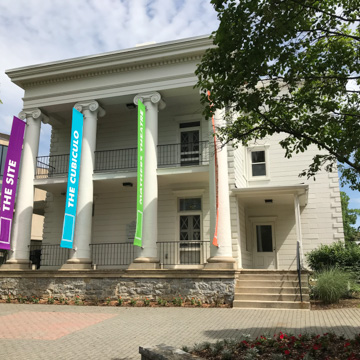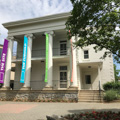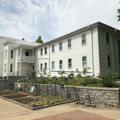You are here
Montgomery Hall (Robert Emory House)
This splendid Greek Revival house was constructed for Professor Robert Emory, whose father was president of Dickinson's Board of Trustees and namesake for Georgia's Emory University. Its massive Ionic portico and plank siding with carved wooden quoins attest to the ambition of its designer. Along with the handsome brick Robert Davidson house (Mansion House, c. 1830) at 145 W. High Street, it attests to the Greek movement that spread across the state and largely ended with the Civil War. Across Louther Street is Dickinson's first truly modern building, New Tome Building (1997–1999) designed by Ellenzweig Associates of Cambridge, Massachusetts, in the traditional college limestone, but with fenestration patterns and roof exhausts that denote its laboratory and classroom purpose, while the projecting metal-clad entrance houses a planetarium. James Hall, next door by West Coast architects Zimmer Gunsul Frasca, is the college's first green science building; it opened in 2008.
Writing Credits
If SAH Archipedia has been useful to you, please consider supporting it.
SAH Archipedia tells the story of the United States through its buildings, landscapes, and cities. This freely available resource empowers the public with authoritative knowledge that deepens their understanding and appreciation of the built environment. But the Society of Architectural Historians, which created SAH Archipedia with University of Virginia Press, needs your support to maintain the high-caliber research, writing, photography, cartography, editing, design, and programming that make SAH Archipedia a trusted online resource available to all who value the history of place, heritage tourism, and learning.











